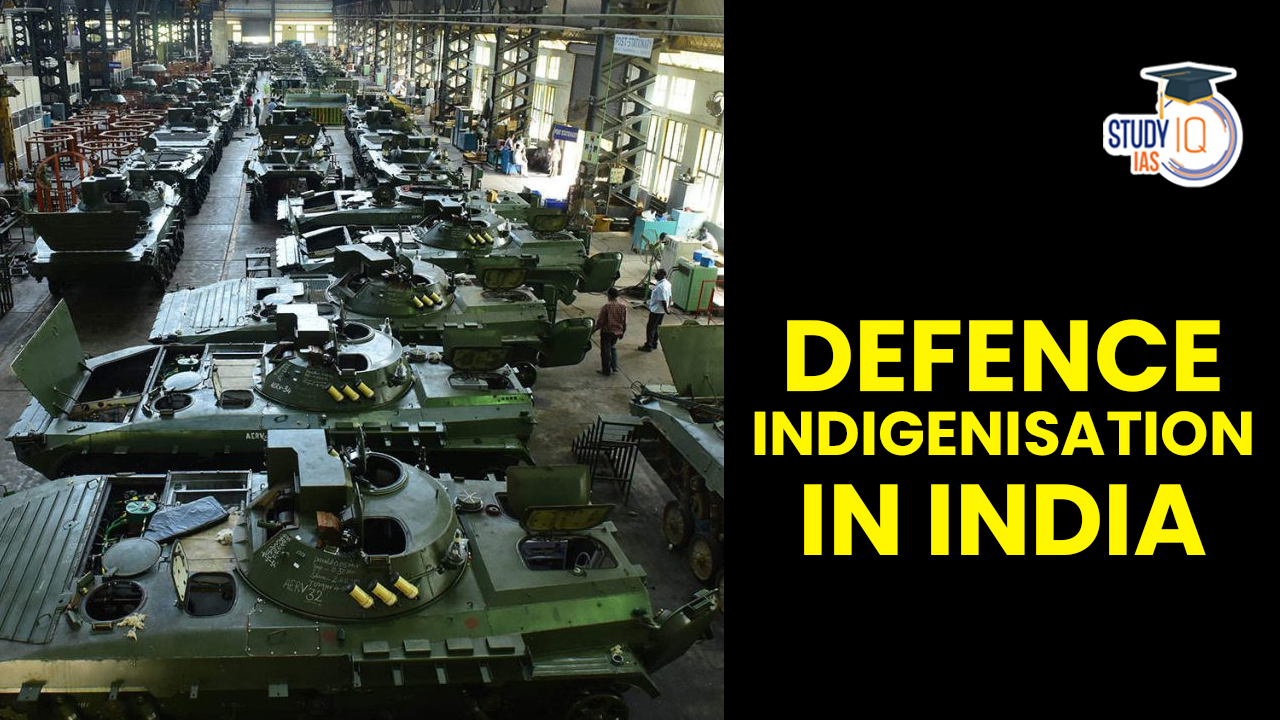Table of Contents
Context: The fifth Positive Indigenisation List and the Navy’s updated indigenisation road map, “Swavlamban 2.0” was recently released by the Defence Ministry.
More on the News
- The fifth Positive Indigenization List comprised of 98 items which include highly complex systems, sensors, weapons and ammunition etc.
- Understanding the Positive Indigenisation List (PIL):
- The PIL essentially means that the Armed Forces—Army, Navy, and Air Force—will only procure the listed items from domestic manufacturers.
- The manufacturers could be private sector players or Defense Public Sector Undertakings.
- This concept was first rolled out in the Defence Acquisition Procedure (DAP) 2020.
- The DAP 2020 is a comprehensive document that outlines the process for the procurement of defense equipment and services in India.
- The DAP replaced the erstwhile Defence Procurement Procedure (DPP).
- The PIL is published by the Ministry of Defense (MoD) and is updated on a regular basis.
- The PIL is a key component of its “Atmanirbhar Bharat” (self-reliant India) initiative.
- Swavlamban 2.0: The roadmap aims to achieve self-reliance in the design, development, and construction of naval warships and submarines.
What is Defence Indigenisation?
- Defence indigenisation is the process of developing and manufacturing defence equipment and systems within the country. It is also known as self-reliance in defence.
- Defence Research & Development Organisation (DRDO), Defence Public Sector Undertakings (DPSUs), and private organisations are playing a critical role in indigenisation of defence industries.
Need for Defence Indigenisation
- To reduce import dependency: According to SIPRI International Arms Transfers 2022 report, India remained the world’s largest arms importer from 2018 to 2022 followed by Saudi Arabia and Ukraine.
- Capacity Building: Developing sophisticated weapons systems for land, sea, and air platforms is vital to address emerging threats and improve operational readiness.
- Regional Power Status: To act as a net security provider in South Asia, India must develop advanced defense capabilities, contributing to regional stability.
- Employment generation: As per government estimates, a reduction in 20-25% in defence related imports could directly create an additional 100,000 to 120,000 highly skilled jobs in India.
Government Initiatives to Promote Defence Indigenisation
- Ministry of Defence has set a target of achieving a turnover of $25 Bn in aerospace and defence Manufacturing by 2025, which includes $5 Bn exports.
- Make in India: Under this, the government has established two Defence Industrial Corridors (DICs) in the country, one in Uttar Pradesh and other in Tamil Nadu.
- Defence Acquisition Procedure (DAP) 2020: The DAP 2020 introduces a new procurement category called “Buy (Indian – Indigenous Design, Development, and Manufacturing)” or IDDM.
- IDDM category gives preference to defense products that are designed, developed, and manufactured in India with a minimum specified level of indigenous content.
- Defence Production and Export Promotion Policy 2020 (DPEPP): Ministry of Defence (MoD) has formulated a draft DPEPP 2020 as guiding document of MoD to provide a focused, structured, and significant thrust to defence production capabilities of the country for self-reliance and exports.
- SRIJAN portal: It is a non-transactional online marketplace platform to partner the private sector in indigenisation efforts of DPSU’s and the Armed Forces.
- Offset Policy: It mandates that foreign defense vendors invest a certain percentage of the contract value in India’s defense and aerospace sector.
- The policy on offsets was first introduced as part of the Defence Procurement Procedure (DPP) 2005.
- Innovation for Defence Excellence (iDEX): It provides funding and other support to startups and individuals to develop new defense technologies.
- Technology Development Fund (TDF): To encourage participation of public/ private industries for enhancing cutting-edge technology capability for defence applications.
- Foreign investment: In the defence sector, the government has liberalized and allowed FDI under automatic route up to 74% and up to 100% through Government route.
Challenges for Defence Indigenisation in India
- Low funding on R&D: India is funding 6% on defence Research & Development (R&D) of the Defence Budget whilst, USA and China are spending approximately 12% and 20%, respectively.
- Over-reliance on Public Sector: There is red tapism in defence production and export due to over -reliance on Defence Research and Development Organisation (DRDO), Ordnance Factory Boards, Hindustan Aeronautics Ltd (HAL) etc.
- Limited Private Sector Participation: Private sector participation in defense manufacturing, especially by Micro, Small, and Medium Enterprises (MSMEs), is currently insufficient.
- Lack of Overarching Organization: The absence of a centralized organization for coordinating defense indigenization efforts leads to a lack of synergy among agencies such as DRDO, and DPSUs.
- Infrastructure Lapses: Due to lack of adequate infrastructure, the demand of importer is not met on time. This forces them to look towards other countries.
Way Forward
- Support to MSMEs/Startups: Through PLIs the export potential of MSMEs/Startups can be utilised.
- Defence Renewal Fund: Ministry of Finance should create a Non-Lapsable Defence Modernisation Fund which can be used exclusively for the procurement of key defence assets at critical times.
- Creation of such fund was also backed by the 15th Finance Commission.
- Funding: Sufficient funding should be allocated to defense research to ensure that strategic projects are pursued with utmost commitment.
- Adopt 5 Is: There is need to adopt the concept of 5 Is (Identify, Incubate, Innovate, Integrate and Indigenize) to accelerate progress, reduce costs and complete defence procurement in a time bound manner.


 Niveshak Didi Initiative Phase 2 launche...
Niveshak Didi Initiative Phase 2 launche...
 Central Pollution Control Board (CPCB) R...
Central Pollution Control Board (CPCB) R...
 Foreign Contribution Regulation Act (FCR...
Foreign Contribution Regulation Act (FCR...





















